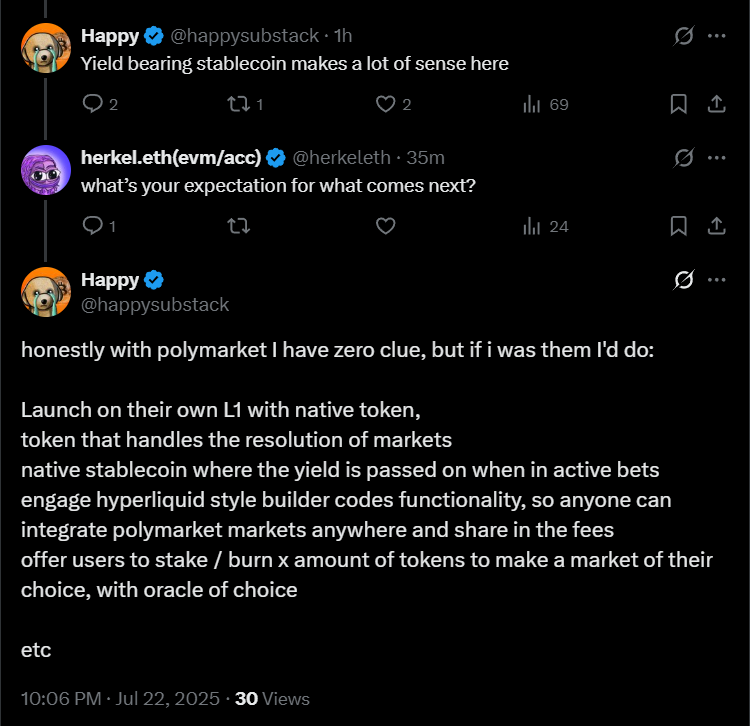Polymarket Eyes Stablecoin Launch—Will This Prediction Platform Disrupt Crypto’s Status Quo?
Polymarket—the US-based prediction platform that's been turning heads in decentralized finance—is reportedly plotting its own stablecoin play. Sources suggest the move could shake up both prediction markets and stablecoin liquidity pools by mid-2025.
Why now? The platform's native token has seen volatile swings despite record prediction market volumes. A proprietary stablecoin might offer users shelter from crypto's storms—while giving TradFi regulators fresh headaches.
Industry analysts whisper about potential collateralization models. Will Polymarket mimic USDC's fully-backed approach? Or gamble with algorithmic mechanisms? Either way, their track record suggests they'll prioritize utility over empty 'stablecoin theater.'
One hedge fund manager quipped: 'Finally—a stablecoin that might actually be used for something besides arbitrage and tax evasion.' The market will decide if that's bullish or just brutally accurate.
Polymarket To Enter the US Stablecoin Market?
According to several reports, the firm is still deciding between issuing its own stablecoin or accepting a revenue-sharing arrangement with Circle. No final decision has been made.
The motivation is reportedly financial. Polymarket holds a large volume of USDC, but currently, Circle collects the yield from those backing reserves.
By issuing its own dollar-pegged token, Polymarket could monetize this FLOW internally.

The amount of USDC on the platform fluctuates with market activity. During the 2024 US election cycle, over $8 billion in bets were placed.
The news follows Polymarket’s efforts to reenter the US market through the acquisition of crypto exchange QCEX. This comes after the DOJ dropped its investigation into the company related to unlicensed access by American users.
Meanwhile, Polymarket’s potential MOVE mirrors a broader trend.
As the GENIUS Act became law last week, several US banks—including JPMorgan and Bank of America—have begun exploring or developing their own tokenized dollars.
These bank-issued stablecoins aim to compete with Circle’s USDC and Tether’s USDT in both consumer and institutional settings.
By launching a platform-native stablecoin, Polymarket could join a growing list of fintech and financial players seeking to vertically integrate token issuance, reserve management, and platform economics.
Still, regulatory risk remains high. Any new issuance would likely require compliance with US stablecoin regulations and potential oversight under the GENIUS Act framework.
For now, Polymarket is still exploring its options. But the decision could have major implications for the prediction market’s revenue model—and for the broader stablecoin ecosystem.

